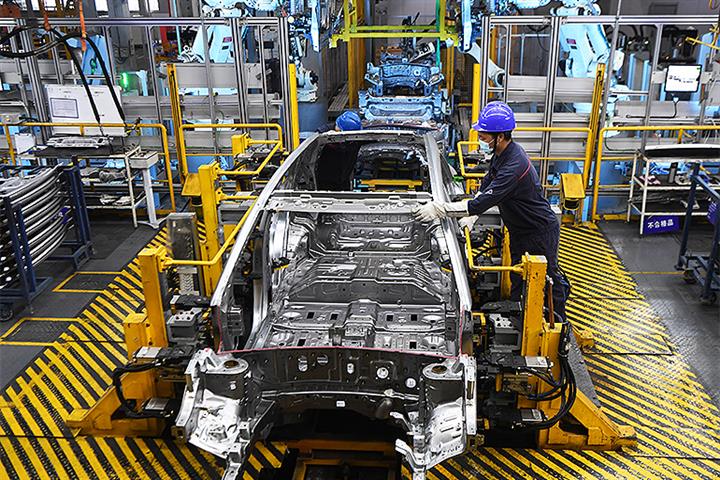 Western China’s Nine-Month GDP Growth Slows as Covid-19 Exposes Shortcomings, Economists Say
Western China’s Nine-Month GDP Growth Slows as Covid-19 Exposes Shortcomings, Economists Say
(Yicai Global) Oct. 25 -- The gross domestic product of China’s western regions slowed in the first three quarters of the year, with economists saying Covid-19 has made it harder for them to lure big investments and has shown that their industrial structures need transforming and upgrading.
Investments in fixed assets in Guizhou province, for instance, fell 9.4 percent in the nine months ended Sept. 30 from a year earlier. Of that, investment in primary and secondary industries jumped 21.8 percent and 9.3 percent, respectively, while that in tertiary industry fell as much as 15.6 percent.
As production and living space shrank amid Covid-19, it became difficult to attract large-scale investments to western regions, Yi Xiaoguang, director of the Chongqing Comprehensive Economic Research Institute, told Yicai Global. In the past, their economies expanded mainly due to the relocation of industries from eastern China and abroad, which boosted the figure despite their low levels of science and technological innovation, Yi said.
The western regions still rely on investment, according to Huang Yong, vice director of the Guizhou Academy of Social Sciences, while eastern regions are quite balanced in terms of exports, domestic demand, and investment. In the wake of the pandemic, the main difference between the two is still the gap between their industrial structures and levels, and growth patterns, he added.
The main disparity lies in manufacturing, Huang said, noting that unlike western China, eastern regions had faster growth after the pandemic because of their manufacturing strength, which is closely related to their industrial layouts and chains, especially for consumer goods. Industry in central and western China, however, is mainly to do with raw materials, and those regions do not have enough deep processing and short industrial chains, he added.
As of yesterday, 24 Chinese provinces had published economic figures for the first three quarters of the year. Hubei province ranked first with an 18.7 percent growth rate, followed by Hunan and Beijing with 12.8 percent and 10.7 percent, respectively. Nine provincial areas were above or in line with national GDP growth of 9.8 percent, but only the municipality of Chongqing, with a 9.9 percent increase, is in West China.
There are also structural differences in the tertiary industries between western and eastern regions, Zeng Zhaoning, vice director of the Shaanxi Economics Society, told Yicai Global. The service industry in coastal areas is dominated by modern finance and logistics, while that in western inland regions it is mainly focused on traditional services such as catering, accommodation, and tourism, the most affected by the pandemic, he said.
Last year, the western regions were not impacted by Covid-19 as much as the eastern ones, meaning the pace of economic growth slowed this year from relatively high base figures for 2020, Zeng added.
Editor: Futura Costaglione